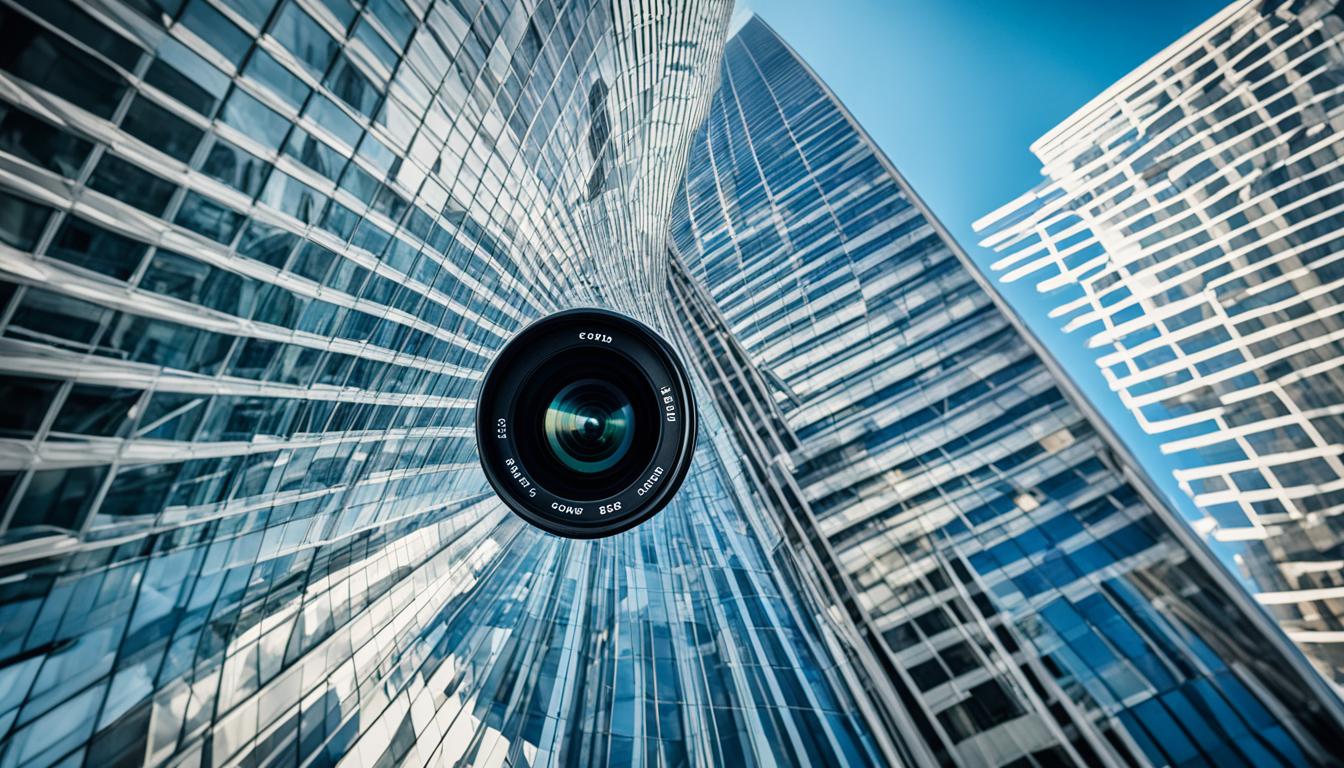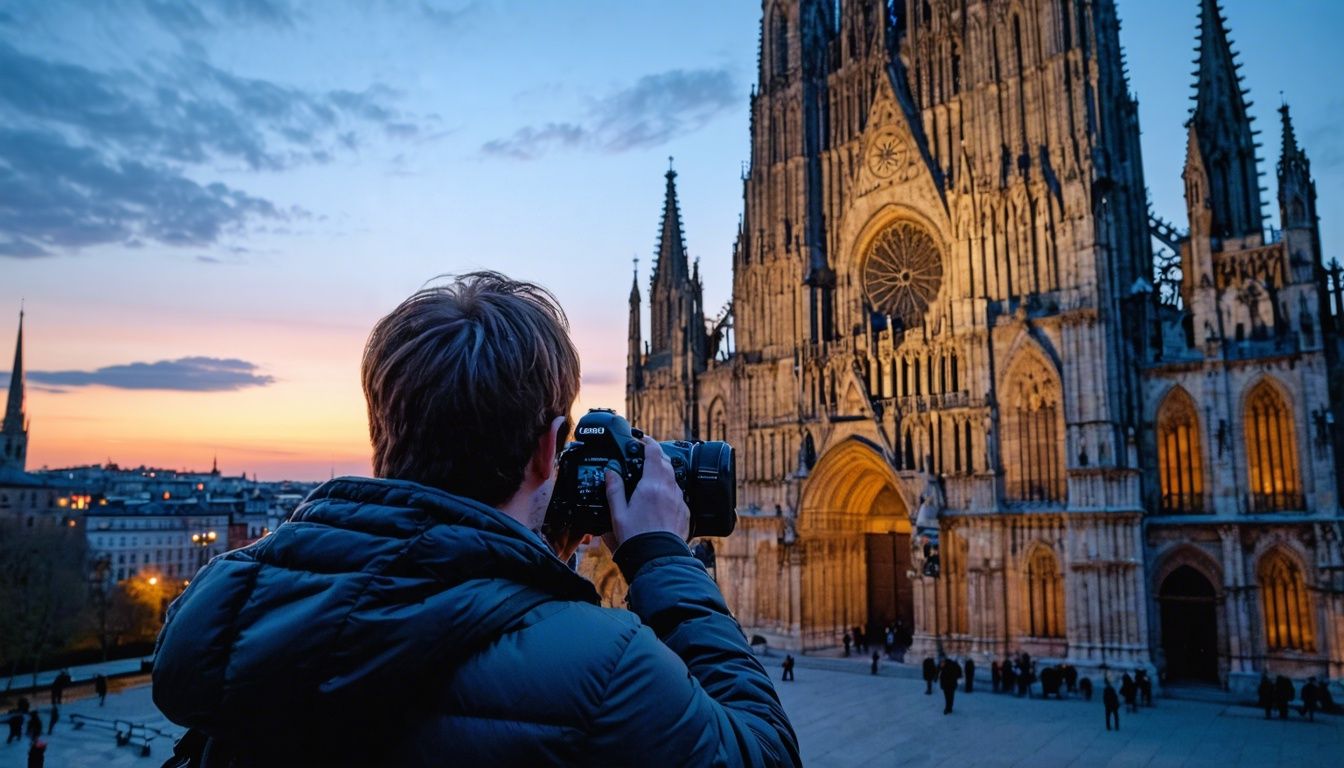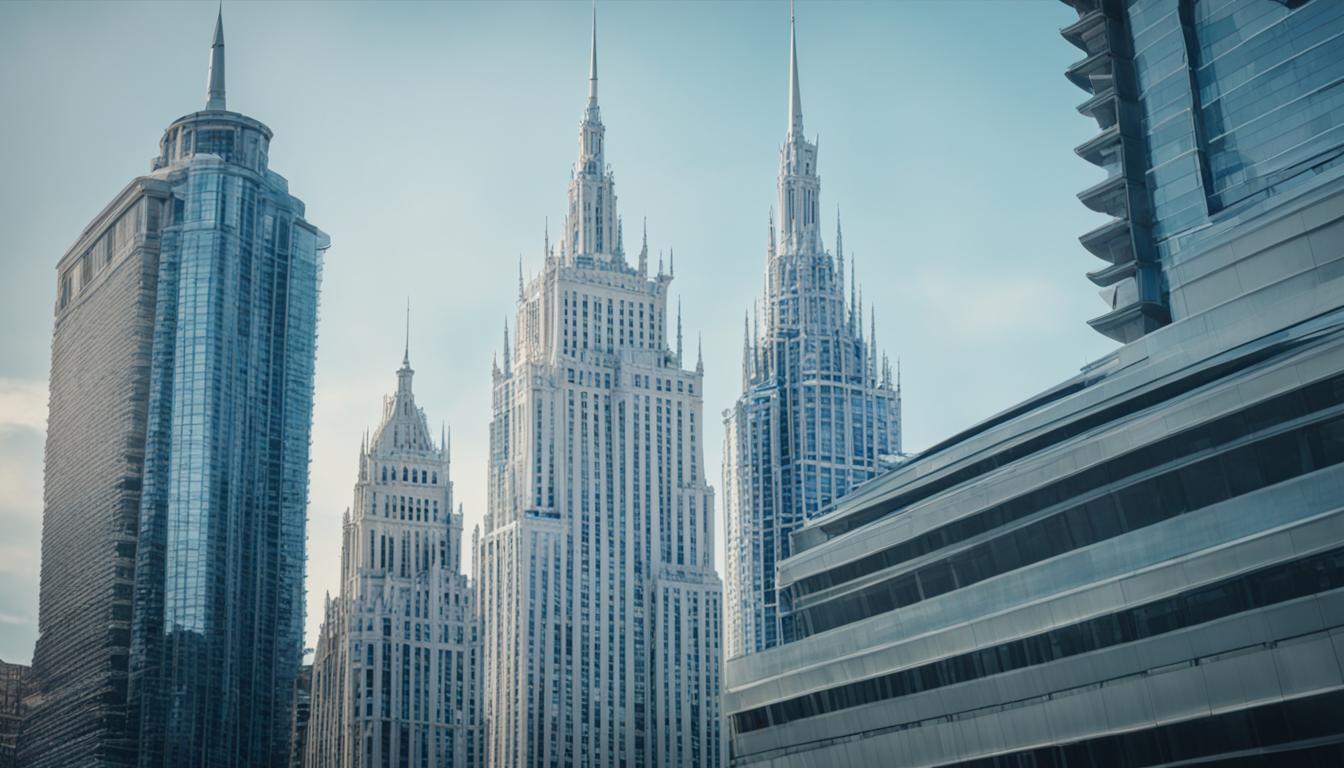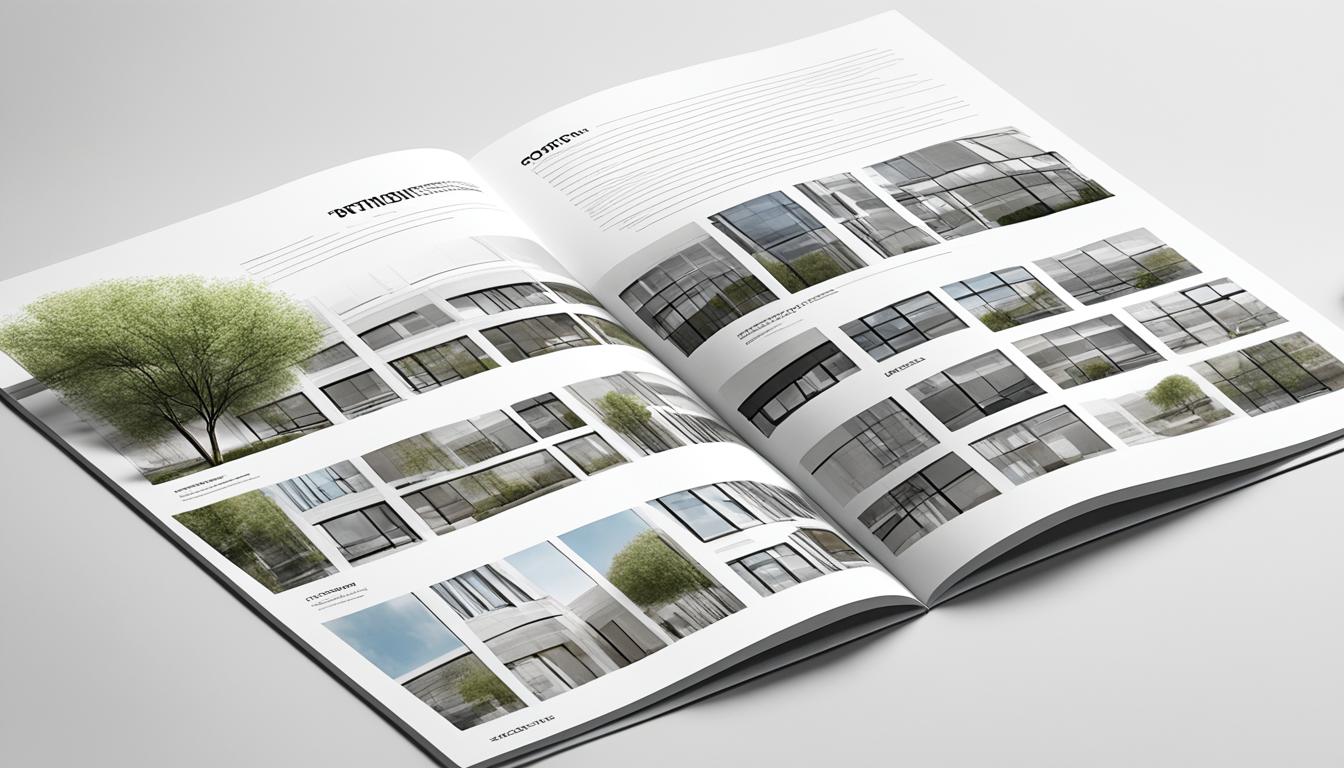Welcome to our comprehensive guide on the essentials of architectural photography. In this overview, we will delve into the key techniques, gear, and tips that will help you capture stunning images of architectural masterpieces. Whether you are an aspiring photographer or a seasoned professional, this guide will provide valuable insights and strategies to elevate your architectural photography skills.
Key Takeaways:
- Understanding the essential techniques, gear, and composition is crucial for successful architectural photography.
- Invest in specialized gear like tilt-shift lenses, tripods, and panorama heads to capture the intricate details and grandeur of buildings.
- Master the art of composition with techniques like the rule of thirds, leading lines, symmetry, framing, and perspective.
- Lighting plays a critical role in architectural photography – utilize natural light, golden hour, blue hour, and artificial lighting techniques to enhance your images.
- Level up your architectural photography with professional tips like thorough research, shooting from various angles, including people for scale, and using post-processing techniques.
Gear for Architectural Photography
When it comes to architectural photography, the gear you use can make a significant difference in the quality and creative possibilities of your images. Capturing the intricate details and wide-angle views of buildings requires specialized equipment that is specifically designed for architectural photography.
Here are some essential gear and tools that every architectural photographer should have in their arsenal:
Tilt-Shift Lens
One of the most important pieces of gear for architectural photography is a tilt-shift lens. These lenses allow for perspective control, correcting the convergence of vertical lines and creating a more natural-looking image. They also provide precise control over depth of field, ensuring that the entire building is in sharp focus.
Wide-Angle Lens
A wide-angle lens is essential for capturing the entire exterior of a building. It allows you to fit more of the structure into the frame, highlighting its grandeur and architectural details. Wide-angle lenses also add depth and dimension to your images, making the viewer feel immersed in the scene.
Tripod
Stability is crucial in architectural photography, especially when shooting long exposures or bracketed shots for HDR. A solid tripod provides the necessary stability to keep your camera steady and avoid blurry images. Look for a sturdy tripod that can handle the weight of your camera and lenses.
Panorama Head
For capturing immersive panoramic images of buildings, a panorama head is essential. It allows you to smoothly rotate your camera while keeping it level, resulting in seamless panoramic photos. A panorama head ensures that each frame aligns perfectly, making it easier to stitch them together in post-processing.
Bubble Level
To ensure precise horizons and level compositions, a bubble level is a small yet invaluable tool. It attaches to your camera’s hot shoe or tripod and helps you align your camera perfectly. This simple tool can make a significant difference in the overall balance and symmetry of your architectural photographs.
Full-Frame Camera
A full-frame camera is highly recommended for architectural photography due to its superior image quality and dynamic range. With a larger sensor, full-frame cameras capture more detail and produce less noise, resulting in sharper and more vibrant images. They also allow for more versatility when it comes to wide-angle and tilt-shift lenses.
Color Calibration Setup
Accurate color reproduction is crucial in architectural photography to faithfully represent the building’s true colors. A color calibration setup, consisting of a color calibration device and software, helps ensure consistent and accurate color across different devices and print mediums.
Polarizing Filter
A polarizing filter is a valuable tool for controlling reflections and enhancing colors in architectural photography. By reducing glare and increasing contrast, a polarizing filter allows you to capture the building’s true colors and textures, especially when shooting glass facades or bodies of water.
Adobe Photoshop
Post-processing is an important step in architectural photography to fine-tune your images and bring out their full potential. Adobe Photoshop is a powerful editing software that offers advanced tools for adjusting exposure, correcting lens distortions, and removing unwanted elements. It allows you to enhance the details, colors, and overall aesthetics of your architectural photographs.
Lighting Equipment
While natural light plays a significant role in architectural photography, supplemental lighting can help bring out the details and textures of a building. Lighting equipment such as external flashes, continuous lights, or portable strobes can be used to add dramatic or accent lighting, especially during twilight or interior shoots.
Having the right gear for architectural photography is crucial to capture stunning and impactful images of buildings. These essential tools, including tilt-shift lenses, wide-angle lenses, tripods, panorama heads, bubble levels, full-frame cameras, color calibration setups, polarizing filters, Adobe Photoshop, and lighting equipment, will enable you to create professional and visually captivating architectural photographs.
Composition in Architectural Photography
When it comes to capturing stunning architectural photographs, composition is key. By utilizing various compositional techniques, you can create visually appealing images that showcase the beauty and grandeur of buildings. In this section, we will explore some important compositional techniques used in architectural photography: the rule of thirds, leading lines, symmetry, framing, and perspective.
The Rule of Thirds
One of the fundamental principles of composition, the rule of thirds, involves dividing your frame into a 3×3 grid. This grid helps you achieve balanced framing by placing key elements of your composition along the gridlines or at their intersections. By aligning your subject or key architectural features with these gridlines, you can create a more visually pleasing and harmonious image.
Leading Lines
Leading lines are powerful compositional tools that guide the viewer’s eye through the photograph. In architectural photography, you can make use of prominent architectural features such as staircases, pillars, or hallways to create leading lines that draw attention to specific elements of the building. These lines not only add visual interest but also create a sense of depth and dimension in your photographs.
Symmetry
Symmetry is often synonymous with elegance and order, making it a popular choice in architectural photography. Look for symmetrical elements in the building’s design, such as perfectly aligned windows, doors, or arches. By positioning yourself in the center and capturing the symmetry, you can create a visually striking image that evokes a sense of balance and beauty.
Framing
Framing is a technique that involves using elements within your composition to frame the subject or architectural feature. This can be achieved by shooting through doorways, windows, or arches, which not only adds depth to your photograph but also helps draw attention to the subject you want to highlight. By carefully choosing the frame within the frame, you can create a captivating image that holds the viewer’s attention.
| Compositional Technique | Description |
|---|---|
| Rule of Thirds | Divide the frame into a 3×3 grid and align key elements along the gridlines or intersections. |
| Leading Lines | Utilize architectural features as lines that guide the viewer’s eye through the image. |
| Symmetry | Capture perfectly aligned architectural elements to create a sense of balance and beauty. |
| Framing | Use elements within the composition to frame the subject or architectural feature. |
| Perspective | Experiment with different vantage points and angles to capture the building’s grandeur. |
Perspective
Choosing the right perspective can greatly enhance the impact of your architectural photographs. By experimenting with different vantage points and angles, you can capture the building’s grandeur and unique features. Consider shooting from low angles to emphasize height and dominance, or from higher points to showcase the building in its entirety. Don’t be afraid to explore unconventional perspectives to bring out different aspects of the architecture.
By incorporating these compositional techniques into your architectural photography, you can create compelling images that capture the essence and beauty of buildings. Experiment with different approaches, take your time to analyze the scene, and let your creativity flourish.

Lighting Tips for Architectural Photography
When it comes to architectural photography, lighting plays a crucial role in capturing the true essence and beauty of buildings. Whether you’re shooting exteriors or interiors, understanding how to manipulate and work with different types of lighting is essential for creating stunning and impactful photographs.
The Importance of Lighting
Proper lighting brings out the architectural details and textures, creating depth and dimension in your photographs. It sets the mood and atmosphere of the scene, enhancing the overall aesthetic appeal.
The Golden Hour and Blue Hour
One of the most favorable times for architectural photography is during the golden hour and blue hour. The golden hour occurs shortly after sunrise and before sunset when the natural light is warm and soft, creating a beautiful golden glow. The blue hour, on the other hand, is the period of twilight before sunrise and after sunset, characterized by a cool blue light that adds a serene and moody vibe to your images. These magical hours provide an ideal lighting condition for capturing breathtaking architectural shots.
Utilizing Ambient Light
Ambient light plays a vital role in architectural photography, especially when shooting interiors. By strategically placing your camera and adjusting exposure settings, you can harness the available natural light to illuminate the space and highlight architectural features. Pay attention to how the light interacts with the space and use it to your advantage.
Artificial Lighting Techniques
In addition to natural light, artificial lighting can be utilized to enhance architectural features. Experimenting with different types of artificial lighting, such as spotlights, floodlights, or even architectural lighting fixtures, can help bring out the desired mood and emphasize specific elements of the building. It allows you to have more control over the lighting and adds a professional touch to your photographs.
Light Painting
Light painting is a creative technique that can be employed in architectural photography to add a touch of magic. By using handheld lights or flashlights, you can selectively illuminate different parts of the building during a long exposure, creating unique and dramatic effects. This technique allows you to highlight specific details or draw attention to architectural elements that would otherwise go unnoticed.
“The interplay between natural and artificial lighting in architectural photography is a delicate balance. Understanding how to leverage both light sources can help you create stunning and captivating images.” – John Smith, professional architectural photographer
By mastering lighting techniques, architectural photographers can bring buildings to life through their images. Whether you’re capturing the grandeur of a skyscraper or the intricate details of a historic building, harnessing the power of lighting is essential for creating compelling and visually striking architectural photographs.
Professional Architectural Photography Tips
To elevate your architectural photography to a professional level, we must pay attention to several key factors. Conducting thorough research on your subject is vital to understand its history, significance, and unique architectural features. By doing so, you’ll be able to capture the essence of the building and showcase its beauty through your lens.
When shooting architectural photographs, it’s essential to experiment with various angles and perspectives. This allows you to highlight different aspects of the building and create visually engaging compositions. Don’t hesitate to get up close or step back to capture the intricate details or the grandeur of the structure. Remember, each angle offers a new perspective and story to tell.
To add scale and visual interest to your architectural photographs, include people in your shots. Humans provide a sense of size and can help the viewer understand the proportions of the building. Whether it’s a passerby walking in front of a historic landmark or a group of people enjoying a modern architectural marvel, their presence can bring life and context to your images.
Post-processing is another crucial aspect of professional architectural photography. After capturing your shots, dedicate time to enhancing them digitally. Experiment with different techniques, such as adjusting brightness, contrast, and color levels to bring out the best in your photographs. Remember to strike a balance between enhancing the image and maintaining its authenticity and natural beauty.
To help you visualize these professional architectural photography tips, take a look at the following table that summarizes the key points:
| Professional Architectural Photography Tips |
|---|
| Conduct thorough research on your subject |
| Shoot at various angles and experiment with different perspectives |
| Include people for scale and visual interest |
| Apply post-processing techniques to enhance your photographs |
By following these professional tips, you’ll be able to take your architectural photography to new heights. Remember that practice, patience, and a keen eye for detail are essential ingredients for perfecting this art form. So go out there, explore different architectural subjects, and capture their beauty through your lens.

Choosing Locations for Architectural Photography
Finding the right locations for architectural photography is essential for capturing stunning images. When selecting photo locations, consider iconic buildings, historic landmarks, and old structures with unique architectural features. These sites provide excellent opportunities to showcase the beauty of architectural design and the historical significance of a place.
In addition to iconic buildings and historic landmarks, explore popular architectural sites in your area. These sites are often frequented by photographers and offer a wealth of architectural photo opportunities. To help you in your search, there are several mobile apps and online tools available that can assist in discovering popular architectural photo locations near you.
By using mobile apps for photo locations, you can access a curated list of top architectural sites recommended by other photographers and travelers. These apps often provide detailed information about each location, including the best time of day for optimal lighting conditions and the specific architectural features worth capturing.
One popular mobile app for architectural photography locations is ArchPhotoLocations. This app offers a vast database of top-rated architectural sites worldwide, allowing you to search for sites based on specific criteria, such as architectural style or historical significance. With this app, you can plan your architectural photography outings with ease, ensuring you don’t miss any iconic or popular shooting spots.
Another useful tool for finding architectural photo locations is Architectural Discoveries. This online platform connects photographers with local guides who specialize in architectural photography. These guides are knowledgeable about the best hidden gems, lesser-known buildings, and unique architectural features in their area. They can provide valuable insights and take you to locations that you might not find on your own.
| Mobile App | Description |
|---|---|
| ArchPhotoLocations | A comprehensive database of top-rated architectural sites worldwide, providing details on architectural style, historical significance, and optimal shooting conditions. |
| Architectural Discoveries | An online platform connecting photographers with local guides who specialize in architectural photography, offering insights and access to hidden gems and unique architectural features. |
Exploring iconic buildings, historic landmarks, and popular architectural sites through the help of mobile apps and online tools will open up a world of possibilities for your architectural photography. Remember to visit these locations at different times of the day to capture a variety of lighting conditions and perspectives. With careful planning and research, you can create captivating images that highlight the beauty and significance of architectural design.
Conclusion
Architectural photography is a captivating art form that requires a combination of technical skills, creative vision, and a deep understanding of the subject. Throughout this guide, we have explored the essentials of architectural photography, including the necessary gear, composition techniques, lighting tips, and professional insights.
By equipping ourselves with the right gear, such as tilt-shift and wide-angle lenses, tripods, and color calibration setups, we can capture the intricate details and expansive beauty of buildings with precision. Understanding composition principles, like the rule of thirds, leading lines, symmetry, and framing, allows us to create visually appealing and engaging architectural images that showcase the grandeur of structures.
Lighting plays a paramount role in architectural photography, and by utilizing natural light during the golden and blue hours, as well as incorporating ambient light and artificial techniques like light painting, we can enhance the ambiance and highlight the architectural features. Additionally, including people in our shots, conducting thorough research on our subjects, and utilizing post-processing techniques can elevate our images to a professional level.
As aspiring architectural photographers, let us continue to explore different locations, experiment with angles and perspectives, and refine our skills. With dedication and practice, we can master the art of architectural photography, telling captivating stories that evoke emotions and inspire admiration for the beauty of the built environment.
FAQ
What are the essential gear for architectural photography?
Some essential gear for architectural photography includes tilt-shift lenses, wide-angle lenses, tripods, panorama heads, bubble levels, full-frame cameras, color calibration setups, polarizing filters, Adobe Photoshop, and lighting equipment.
What compositional techniques are important in architectural photography?
Key compositional techniques in architectural photography include the rule of thirds, leading lines, symmetry, framing, and perspective.
How can I utilize lighting in architectural photography?
Lighting is crucial in architectural photography. You can use natural light during the golden hour and blue hour, as well as ambient light and artificial lighting techniques. Light painting can also be employed to selectively illuminate different parts of a building.
What are some professional tips for architectural photography?
To elevate your architectural photography, it’s important to research your subject, shoot from various angles, experiment with different perspectives, include people for scale and visual interest, and utilize post-processing techniques.
How do I choose the right locations for architectural photography?
When choosing locations for architectural photography, consider iconic buildings, historic landmarks, and old structures with unique architectural features. You can also use mobile apps and online tools to discover popular architectural photo locations in your area.
How can I Apply Architectural Photography Techniques to Fine Art Photography Exhibits?
When applying architectural photography techniques to fine art photography exhibits, pay attention to lighting and composition. Utilize leading lines and angles to create visual interest. Experiment with different perspectives and focal lengths to capture the essence of the fine art photography exhibits in a unique and captivating way.




